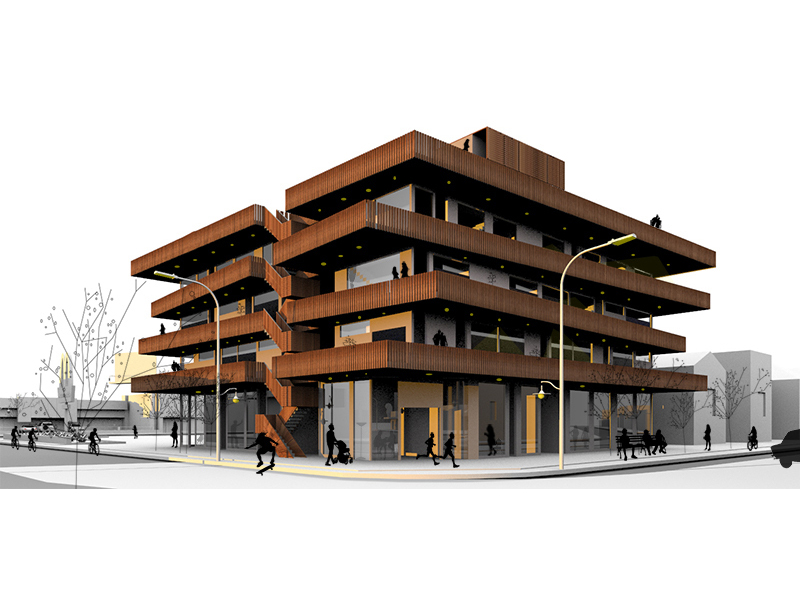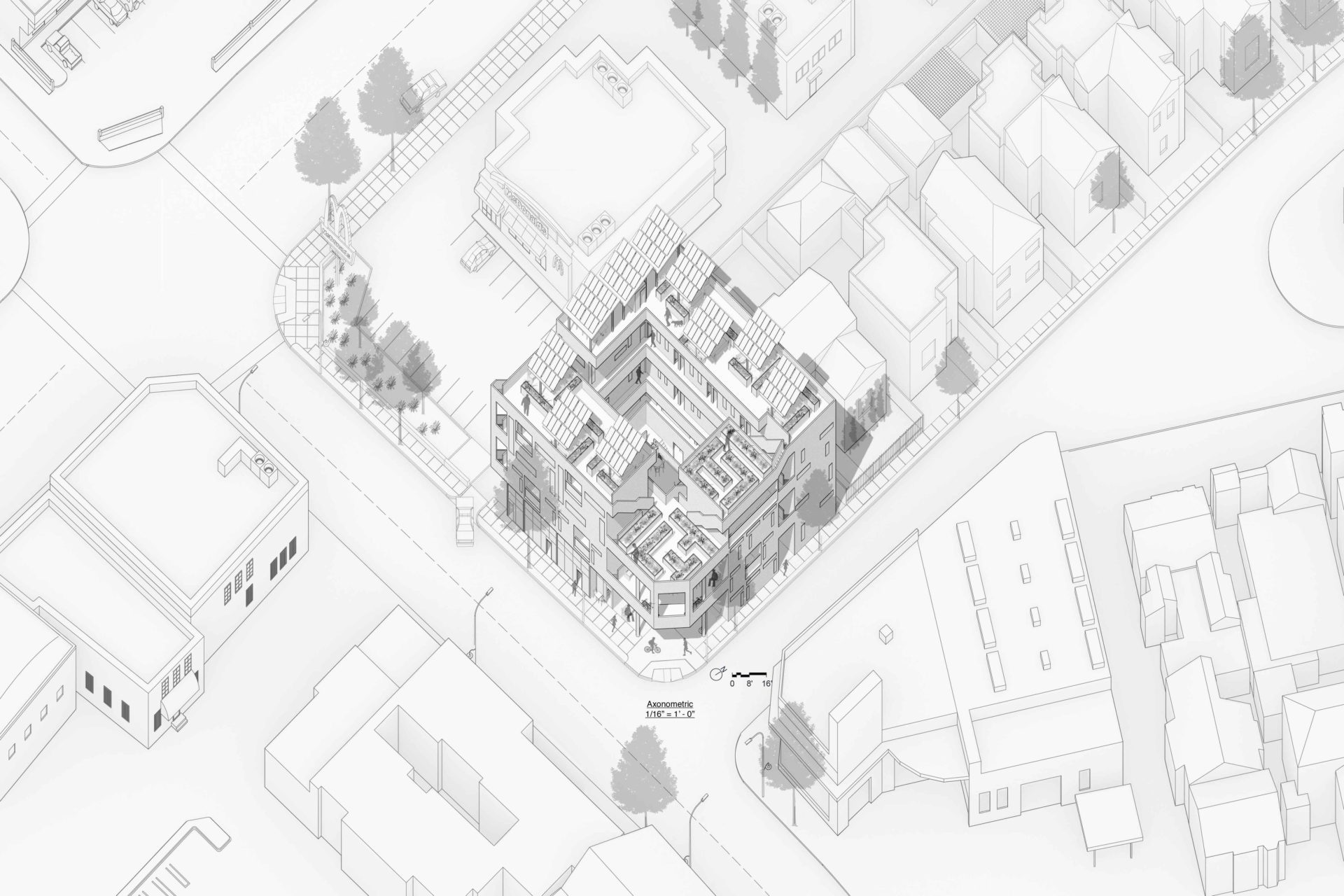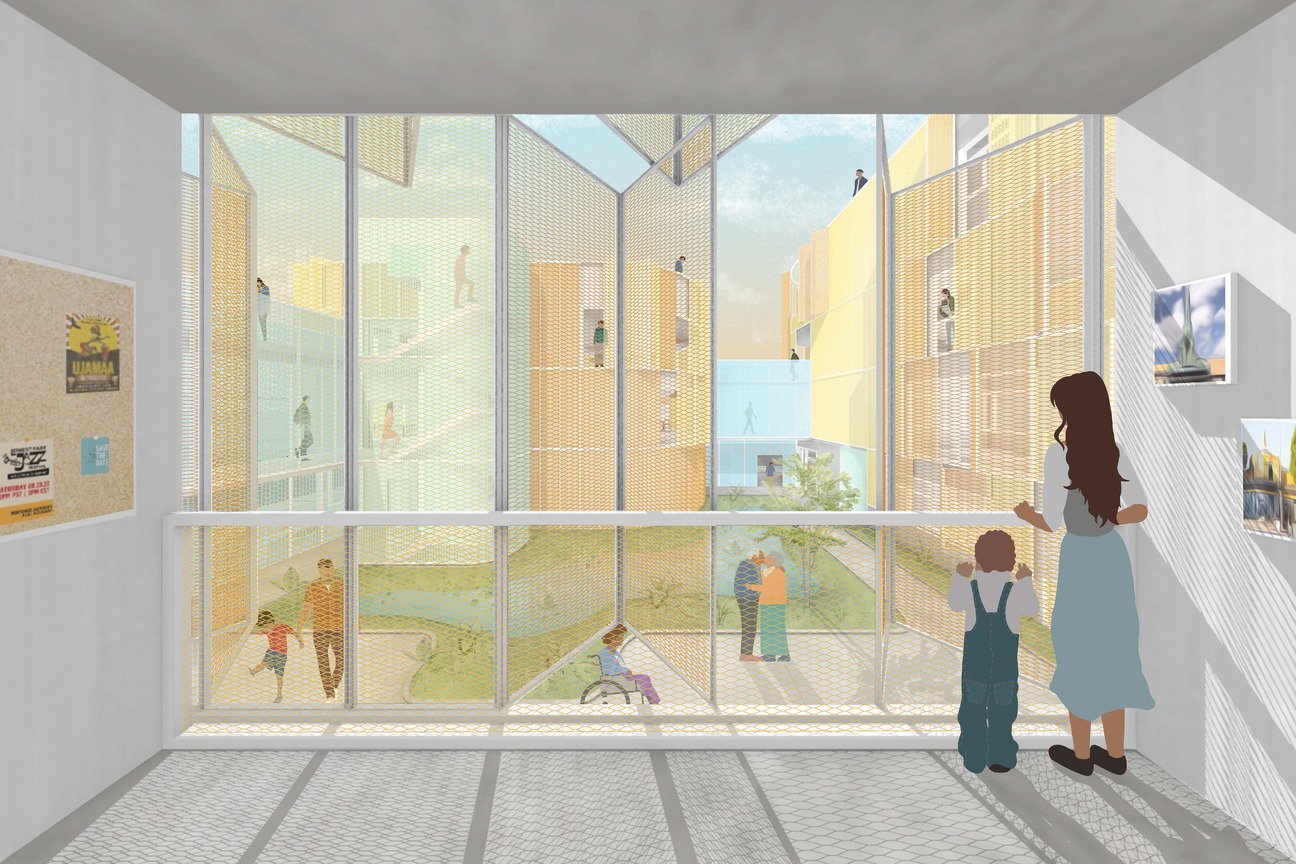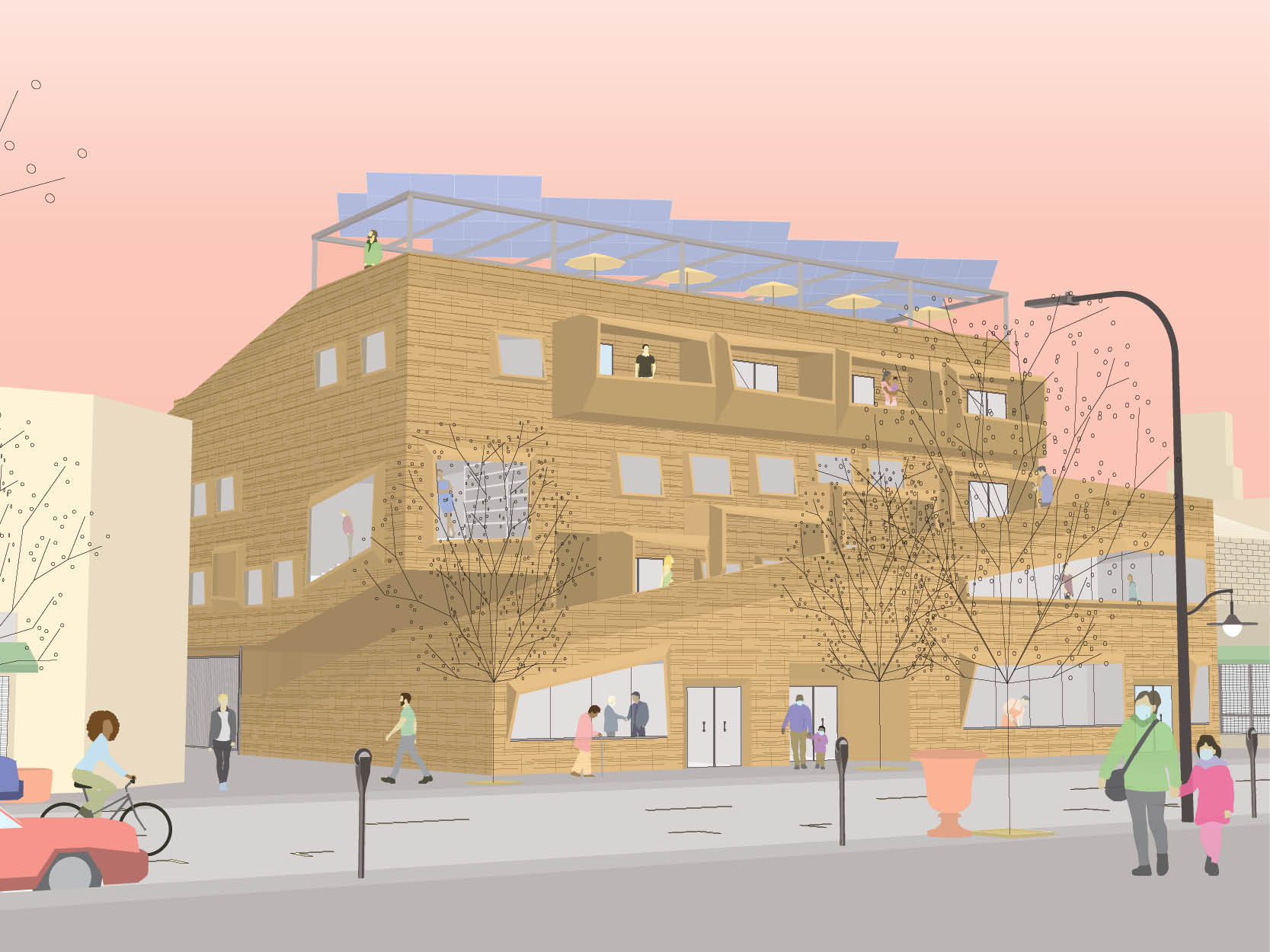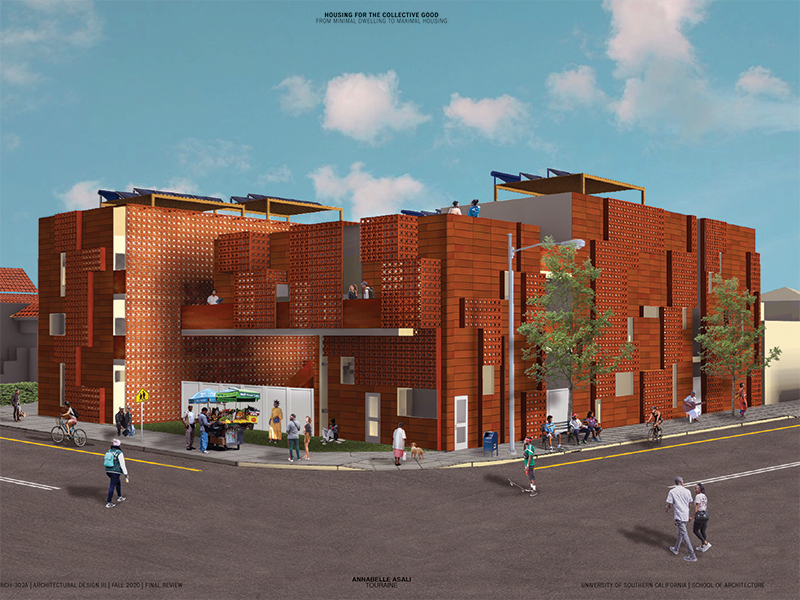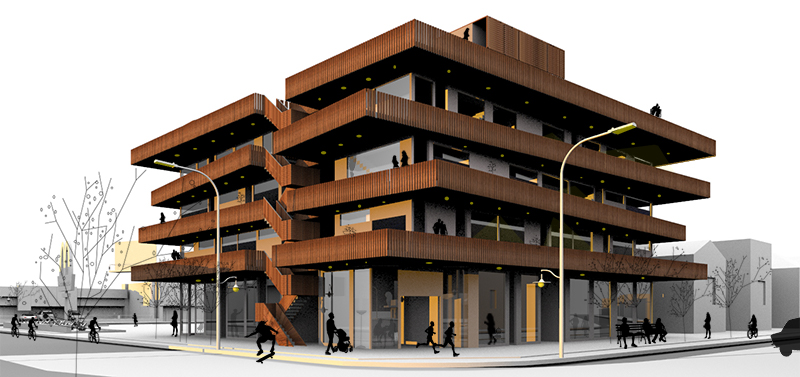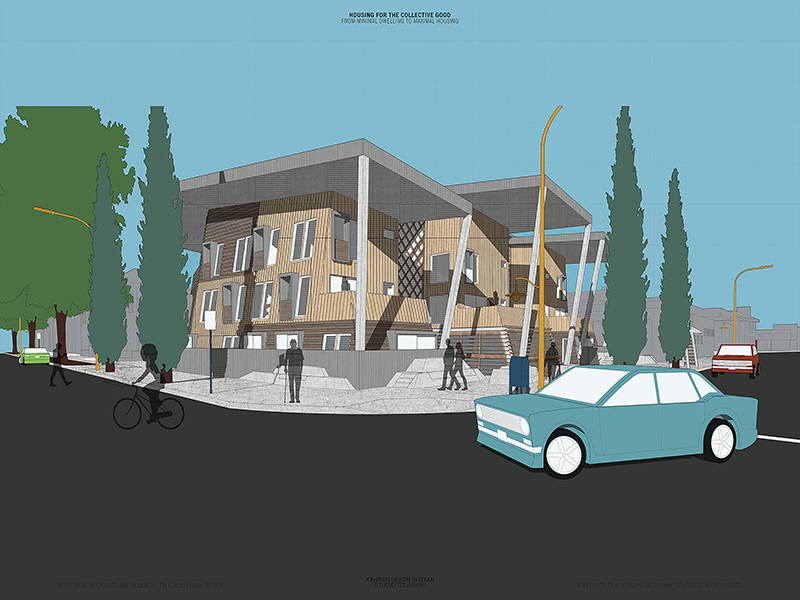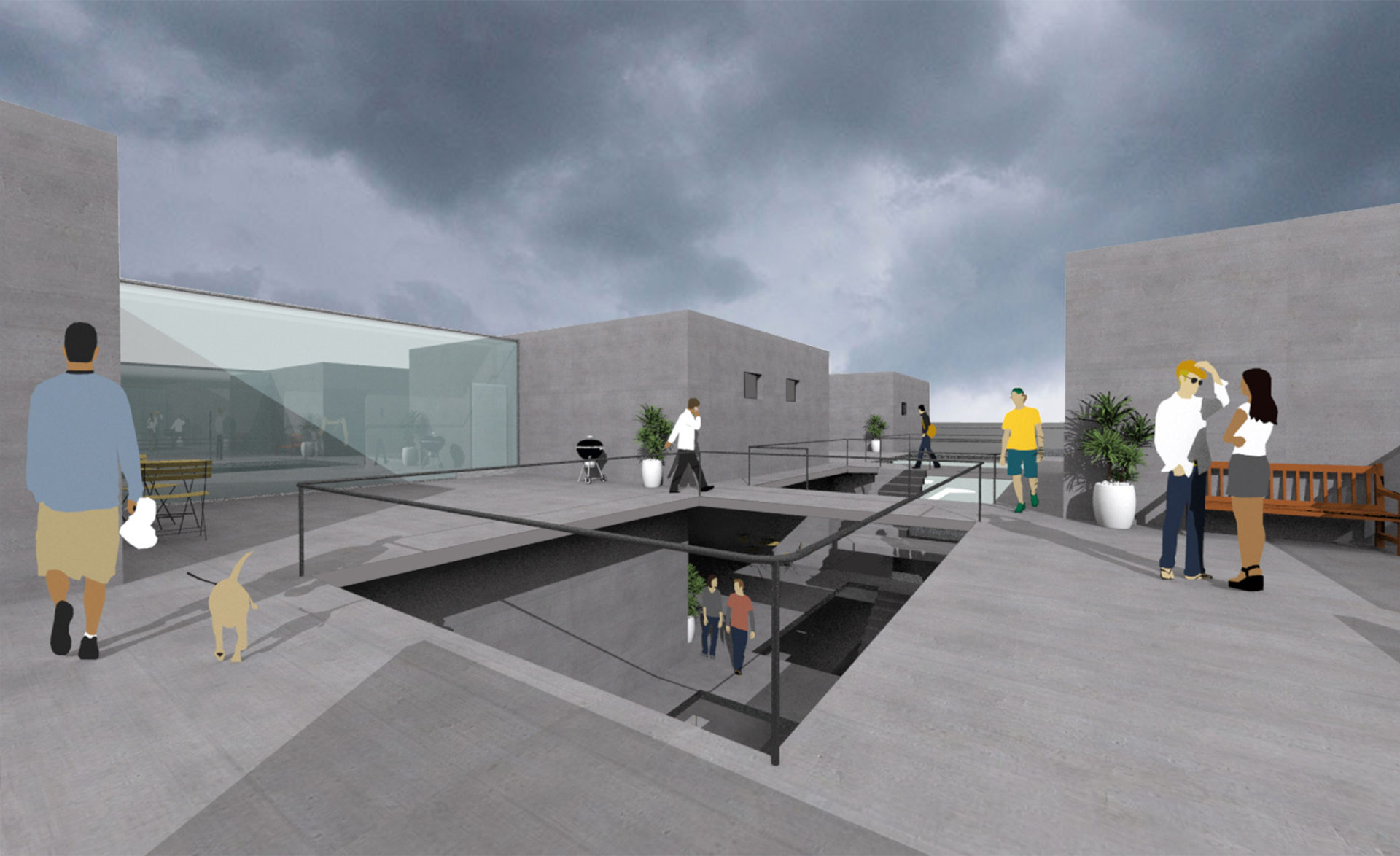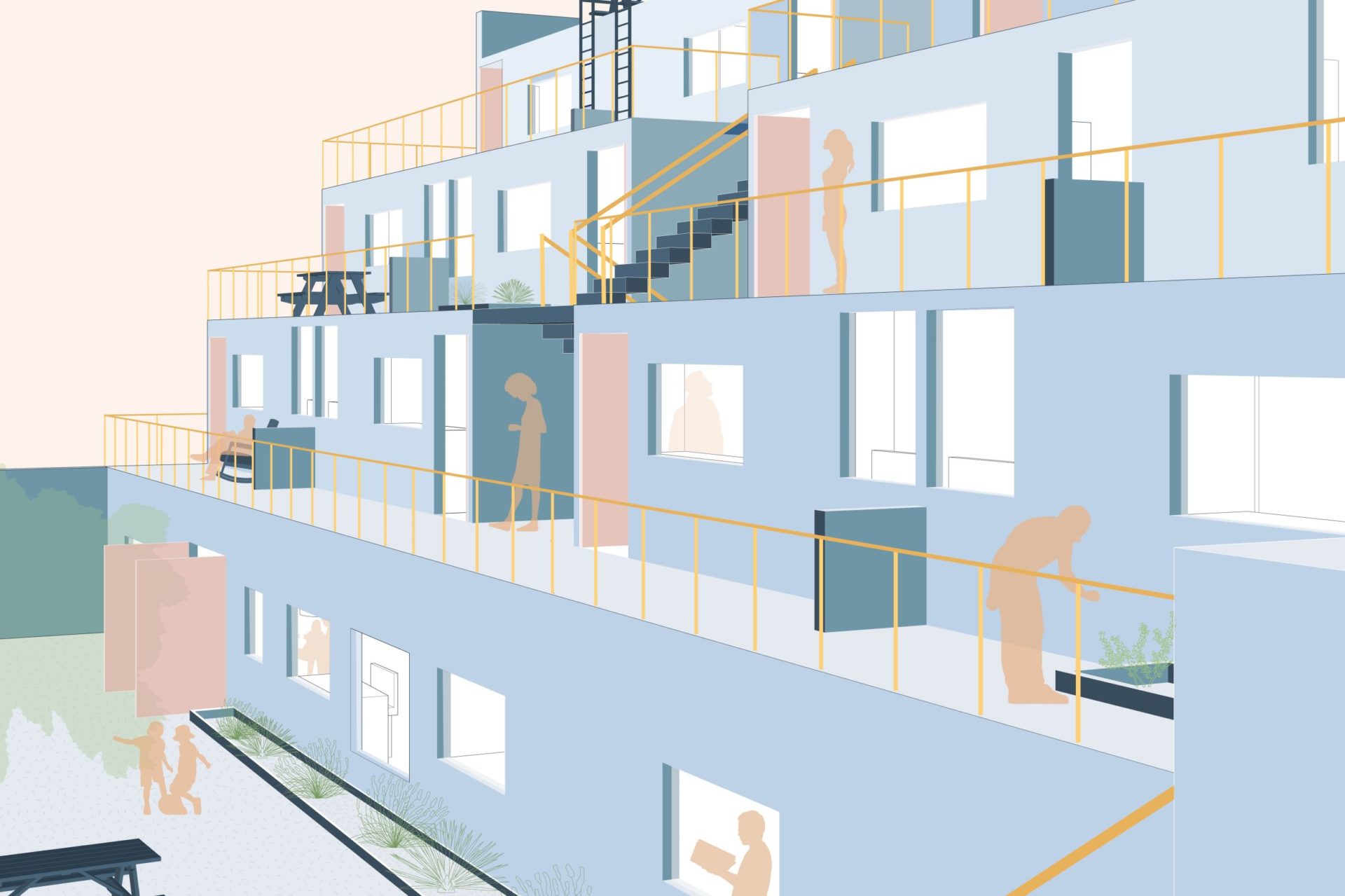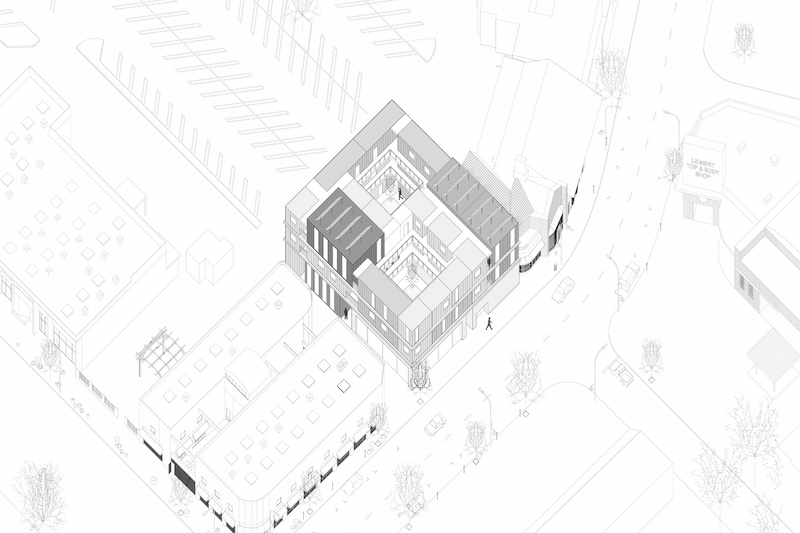Categories
Co-op City – Housing for the Collective Good: From Minimal Dwelling to Maximal Housing
The 302a studio took the task to design affordable housing units on three different sites along W 43rd Street in LA’s Leimert Park Village. Building on the limited equity co-operative model, which allows residents to collectively own and manage the house they live in, all buildings were considered not-for profit and providing affordable long-term rental units free of speculation. Accordingly, students were asked to design projects that are able to react to future owners and tenants of diverse cultural and demographic backgrounds, offer respective openness and adaptability, as well as incorporate functions that serve the community beyond their particular housing units. In addition, the designs should also strive for environmental sustainability. Here, the model of the so-called ‘2000-Watt Society’ – which assumes a global individual energy quota of 2000 Watts per person per year – provided an important guideline. Beyond the need of building in a sustainable manner, a common benchmark of achieving the ‘2000-Watt Society’ is based on the amount of space attributed to every dweller – namely 215 ft2 of individual and 35 ft2 of collective living area per person. Incorporating these aspects into innovative design proposals, the studio understood housing – and the act of design – as a means of social inclusion and environmental sustainability that, ultimately, could be seen as a contribution to the collective good.
